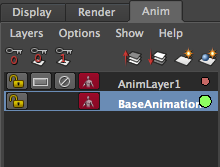For me, watching a lot of movies is the best way to learn acting, and it's probably much cheaper than taking acting classes. I watch many movies (but the weird thing is my list never get shorter), but not just watch. I pay attention to their acting, what's the story, what's inside of their minds, what's the relationship...etc. I found this become one of the standerd for me to rate movies, and plus, it makes good movies even more interesting by details which I didn't notice before.
I took a clip from movie named "Fair Game", (Sean Penn, Naomi Watt) to explain how I analyse a scene, and how it's going to help me animating. Before you watch this clip, I'd like to give you a heads up (not-that-much spoil alarm). Sean Penn is an Ambassador to Niger and Naomi Watt is his wife. At this friends gathering, there is one guy starts a racist topic about people from mid-east...
Here is what I read from the scene:
-F120, Sean Penn: "what are you talking about?", then he rise his head and say "no...not the racist BS...".
-F340 he is try to cover his upset and not to embarrass his friend.
-His wife here, apparently who knows Sean Penn the most, knowing something is coming, and wish this guy can just stop talking.
-F660, Sean Penn look at this guy and think about: "Are you sure you want to keep talking? Because I'm not going to stand this!" (Angry)
-F740, Naomi Watt: "no...it's coming." (Embarrassing)
-Then the last shot Sean Penn sits up and strikes back, the scene ends here.
Analyse what's inside of character's mind could help me chose what's the best acting choice for my shot. I usually prefer to simplify it to a word or a simple sentence, then everything else need to support this idea. If I have character is growing his anger inside like Sean Penn here, a little root happy bouncing might not be the best fit.
In this clip, We don't even need to see the end and exactly know what's going to happen next. Sean Penn doesn't need to say a word but express them crystal clear. This is the same goal that animation should achieve. We have no luxury to let audience guess what's going on, otherwise we'll pull the audience out of screen and lose believability immediately.
P.S. As a movie lover, there is nothing better then having a good time and call it research! :)


